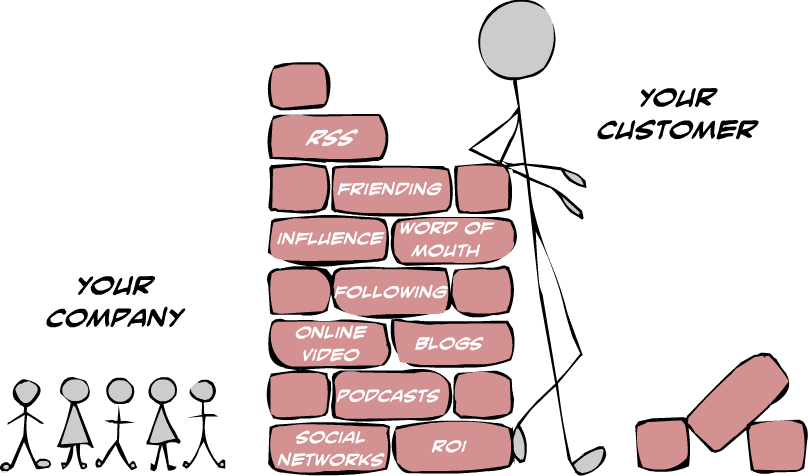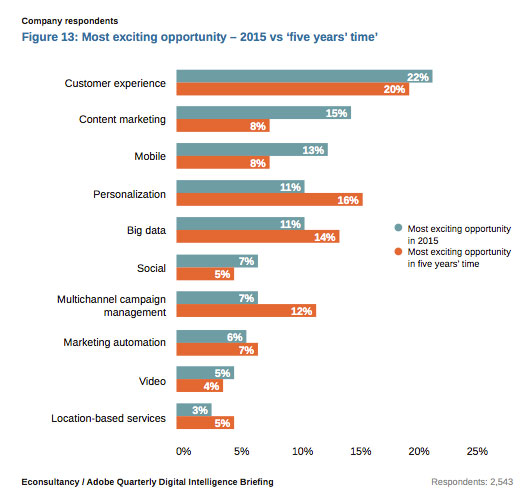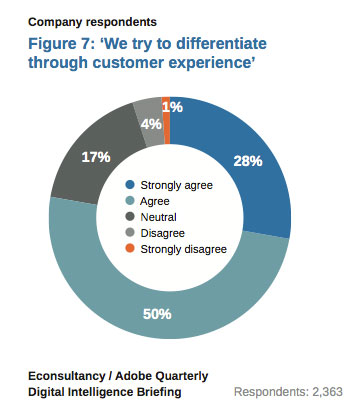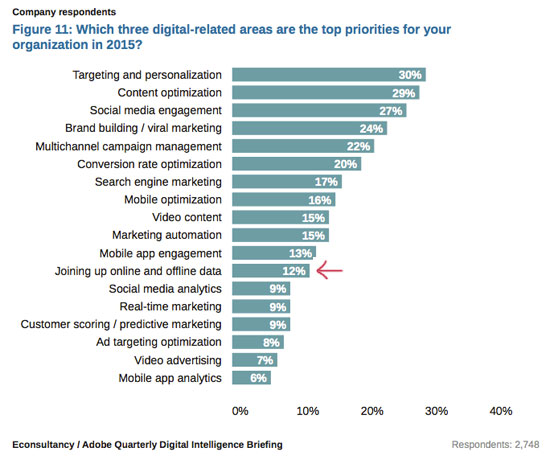Customer experience ranked top among marketers as the most exciting opportunity this year, according to Adobe and Econsultancy’s Quarterly Digital Intelligence Briefing: Digital Trends 2015. But are marketers really ready to execute?
Wikipedia defines customer experience simply as “the sum of all experiences a customer has with a supplier of goods and/or services, over the duration of their relationship with that supplier.” In an ecommerce / omnichannel context, customer experience spans every brand, sales and marketing touchpoint across digital and physicalpurchases.
Why was customer experience (CX) ranked as “most exciting”?
CX As a Differentiator
78% of respondents agree or strongly agree that customer experience is about differentiation. In the age of Amazon, retailers can’t compete with price, selection, discounts or free shipping offers. There has to be more to the experience.
If customer experience boils down to being easy, fun, valuable and/or pleasurable to shop with a company, then the goal of customer experience as a marketing objective is ultimately to be more easy, fun, valuable or pleasurable to shop with than the competition.
CX Fantasy vs. Reality
“While organizations are aware of the opportunities afforded by a customer-focused approach, not all of them capitalize on this, as CX is one of the areas where the anticipated opportunity was outstripped by reality in 2014.”
The problem facing many companies is not lack of cross-touchpoint strategies and tactics, but rather it’s the lack of data integration, technological infrastructure and process that holds CX back.
Marketers overwhelmingly believe understanding the customer journey across channels and delivering a great experience across touchpoints is very important, yet only 12% consider joining up online and offline data a top-3 priority.
Without integrated data, marketers cannot effectively understand the customer journey across channels. Decisions are made on gut feelings and actions. Sales won’t receive proper attribution. Strategies and tactics can’t be properly measured.
In the same study, the same marketers ranked targeting and personalization top priorities for the coming year — essentials for customer experience. But personalization requires context and context is gleaned from data. When data lives in silos, the experience can only be personalized in the context of interaction within the channel.
While consistency of messaging across channels is somewhat under a marketer’s control, without a complete understanding of cross-channel response the marketer risks irrelevant targeting. Did the customer add to cart online but ultimately purchase in-store? Are you still remarketing to them? Did they buy online but return in-store? Are you still recommending accessories to them online?
We know many customers use mobile to research and discover products, only to convert in offline or Web channels. Without integrated data, marketers only understand a piece of the journey.
So why do marketers seem to overlook the importance of data integration?
Marketers know the value of data but won’t prioritize data-driven customer experience if it’s perceived as too difficult to get social, mobile, CRM, personalization tools, offline data, beacons, Web analytics, etc to play nicely with each other. Without integrated data sources and systems, marketers’ CX strategies are constrained to channel-centric experiences, based off channel-centric context.
And that’s what’s wrong with customer experience strategy.
Image credit: CC by Ron







